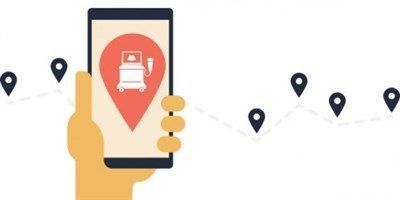
Roundtable: RTLS systems More common, but are they right for your facility?
Roundtable: RTLS systems More common, but are they right for your facility?
Mon Jan 12 2015
Roundtable: RTLS systems More common, but are they right for your facility?
The use of a Real-Time Locating System (RTLS) has many benefits for healthcare facilities.The ability to track medical devices helps prevent loss and has a positive impact on patient safety and patient satisfaction. RTLS is becoming more common in the industry and TechNation reached out to manufacturers and technicians to find out the latest about these complex systems.
The panel of contributors for this roundtable discussion includes Bill Bailey, Enterprise Architect-Technical Services, ProHealth Care; Kurt Burner, MBA, CBET, Biomedical Engineering Manager, Akron General Health System; Adam Peck, Director of Marketing, CenTrak; and Jon Poshywak, Vice President and General Manager, TeleTracking Technologies Inc.
Q: What are the latest advances or significant changes in Real-Time Locating Systems in the past year?
Bailey: Some of the latest advances and significant changes are applications integration and organizational utility level services. Also, the ending reign of single application implementations.
Burner: A tag that can go through sterilization with the OR instruments.
Peck: Over the last year, the use of hybrid clinical-grade locating technologies to support advanced RTLS use cases including automating mobile medical equipment maintenance and management. The Department of Veterans Affairs standardization on a hybrid, clinical-grade RTLS is helping to drive adoption in healthcare. There has also been increased interest and adoption of RTLS for the purposes of automating clinical workflow – particularly in the OR and ED use cases where capacity management and patient throughput is most critical.
Poshywak: Through stronger application integrations, RTLS systems now power the automation of the entire operational side of the hospital by enabling integrated workflow and capacity management systems to track functions in real time and provide instant performance data. Operational platforms coupled with robust business analytics are allowing caregivers and service support teams to make real-time decisions that have a tremendous impact on the way hospitals operate and impact key metrics like patient length of stay and staff productivity.
Q: How will those changes impact the Real-Time Locating Systems market in the future?
Bailey: Selling an enterprise solution by communicating value to multiple business owners.
Burner: A tag that can go through sterilization with the OR instruments will enable the OR or Central Sterile to track where in the cleaning process a certain tray is anywhere in the facility.
Peck: We’re seeing greater demand for clinical-grade infrastructure – specifically room-, bed-, chair-, and shelf-level accuracy with rapid location updates and extreme battery life. This infrastructure can truly automate location-ready healthcare applications (like CMMS, Nurse Call, patient flow solutions and EMRs). Finally, the ability to leverage a facilities existing Wi-Fi infrastructure is reducing the initial capital investment required to gain the benefit of an asset visibility application.
Poshywak: Less than 20 percent of the U.S. healthcare market has adopted RTLS-enabled operational management systems to date, so the upside potential is large. Companies that step to the forefront of merging RTLS enabled data with operational platform applications will be well positioned to drive meaningful growth in the RTLS market.
Click here to view the entire article on TechNation!

